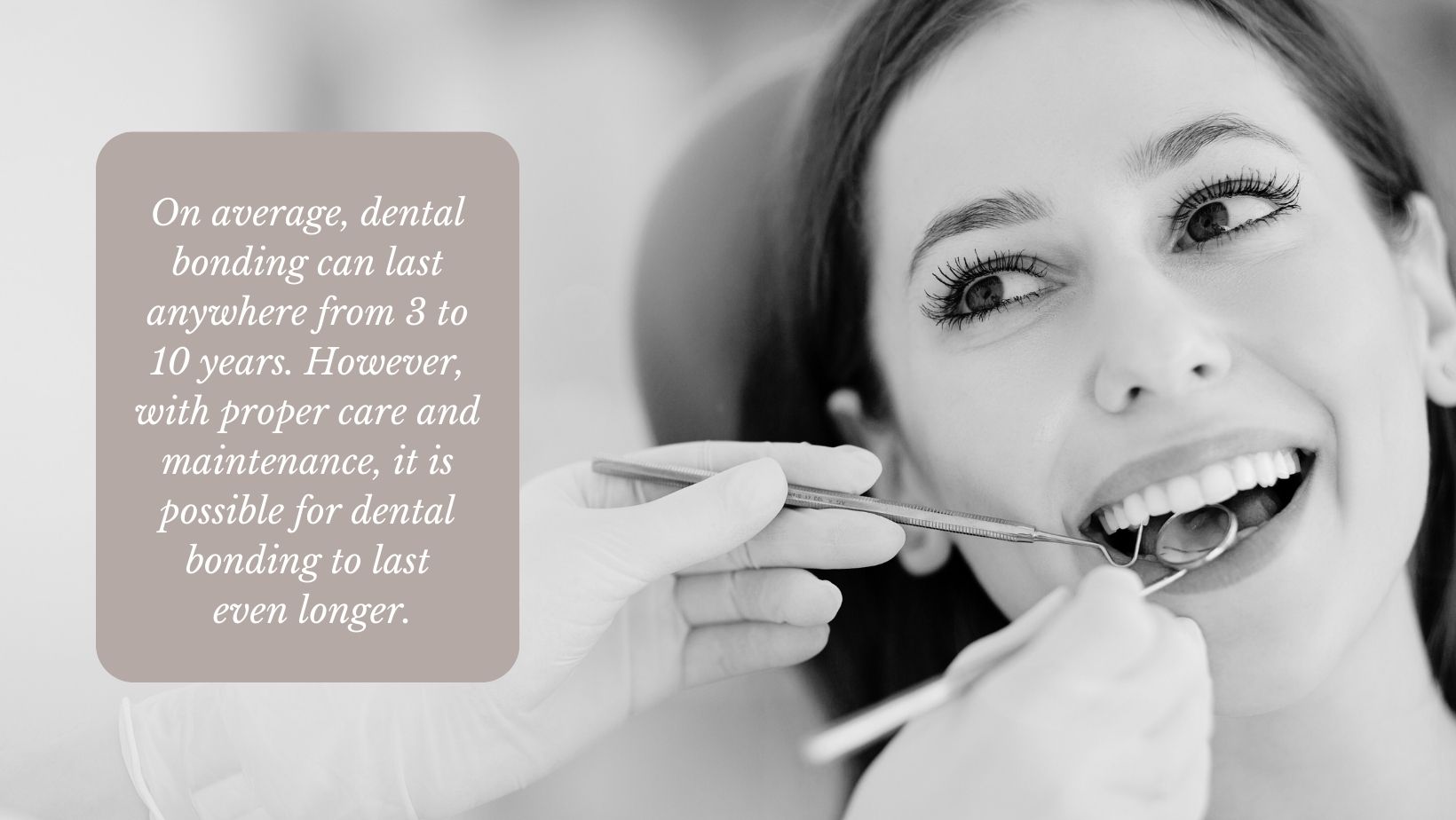Dental bonding can fix a number of issues without anesthesia and with less than an hour in the dentist’s chair. This non-invasive technique is popular and widely used for fixing a chipped tooth, closing gaps, and restoring discolored teeth. Find out how your smile can benefit from this low-cost, painless procedure.
What Can Dental Bonding Fix?
The bonding material and procedure are similar to having a tooth filled, but instead of repairing the interior of the tooth, it fixes problems on the surface.
Breaks. Bonding works well to fix cracks or small chips in teeth as long as the strength and structure of the teeth are intact. A tooth with extensive damage might need a veneer, crown, or implant instead. Bonding can be used to fix jagged chips on back teeth that might be uncomfortable or make chewing difficult. But since it is mostly cosmetic, it is rarely used on teeth that aren’t visible.
Gaps. Dental bonding material can be added to teeth to fill in small spaces between them. Larger openings might need to be closed up by moving the teeth with braces or Invisalign.
Reshaping. Teeth may be bonded to change their shape for a straighter smile. For example, the dentist might add composite material to the end of a short tooth to make it even with its neighbors. Another use is with a receding gum line. This can expose some of a tooth’s root. Bonding material can fill in the space between tooth and gum.
Stains. There are some teeth stains that cannot be removed even using the strongest professional whitening methods. With dental bonding, teeth can get a new, bright white surface.
The Dental Bonding Process
The dental bonding process is similar, but not as invasive, as having a cavity filled. There is no drilling involved, so there’s no need for an anesthetic. The dentist prepares the tooth by roughening it, then brushing on a conditioning solution that helps the composite bond to the tooth.
At this stage, the bonding compound is a soft putty-like material. The dentist will have chosen a shade that most closely matches the color of the patient’s teeth. They then apply the resin and mold and sculpt it into the correct shape.
Next, a special laser or blue light is used to speed up the hardening of the composite resin. Once it is set and bonded to the tooth, the dentist applies the finishing touches of smoothing out any rough edges and polishing the “new” tooth.
How Long Does Dental Bonding Last?
On average, dental bonding can last anywhere from 3 to 10 years. However, with proper care and maintenance, it is possible for dental bonding to last even longer. The durability of dental bonding can vary depending on several factors, including:
- Location in the mouth.
- The amount of wear and tear. It is best to avoid habits that can put excessive stress on the bonded teeth, such as biting on hard objects and chewing on ice.
- Oral hygiene practices. To help extend the lifespan of dental bonding, it is important to follow good oral hygiene practices, including regular brushing and flossing as well as routine dental check-ups.
It is important to note that dental bonding is not as durable as some other restorative options, such as dental crowns or veneers. If you are looking for a longer-lasting solution, your dentist may recommend alternative treatments based on your specific dental needs.

Comparing Dental Bonding to Alternatives
Veneers and crowns are the most common alternatives to bonding, but there are several instances when bonding is preferable.
Veneers. Unlike bonding, which is applied only to a tooth’s flaw, veneers cover the entire front surface of a tooth. Like bonding, composite resin may be used, but so can porcelain. Veneers can cover up chips and cracks, or provide a more permanent alternative to teeth whitening.
These “false fronts” for teeth are created in a lab from impressions of the patient’s mouth. This takes additional time and dental visits, where bonding takes little to no preparation. Getting veneers also requires the removal of some tooth enamel in order for it to fit and adhere properly, something that isn’t necessary with tooth bonding.
Crowns. Dental crowns cover teeth completely, so they can cover up flaws too. But they would be overkill for cosmetic imperfections that could easily be fixed with dental bonding. Crowns are more often used on teeth that need a root canal procedure. They are meant to save the tooth, rather than just make it look better.
If a tooth’s imperfections are minimal and there’s no major damage that would require a full restoration, dental bonding is a practical choice. The procedure itself is easy, painless, and can be completed within an hour. Because there is little preparation necessary, a dentist can use bonding to fix a chip or crack in an emergency.
The Cost of Dental Bonding
Several factors go into determining the cost of cosmetic dentistry. Prices can vary depending on the dentist and the region where they practice. For reconstructive procedures like veneers and crowns, there will be a difference in cost depending on the materials used.
Unfortunately, insurance typically won’t pay for cosmetic procedures like dental bonding. If the dentist is fixing a chip or crack, there is a better chance of it being covered, as it could be considered a necessary procedure.
The average cost of dental bonding is between $300 and $600 per tooth. While that might seem expensive, it is cheaper than the alternatives. Veneers typically range from $500-$1,100 per tooth, and crowns can be $1,000-$1,500. Dental bonding is worth considering, especially if a patient is hoping to fix more than one tooth.
Are There Drawbacks to Getting Teeth Bonded?
Dental bonding can be convenient and painless, and the cost is reasonable compared to alternatives. There are a few points to consider, however, when making the decision.
Bonding is not permanent: Although the composite resin used for bonding is strong, it is not indestructible. It is possible for bonding to crack or break off. The chances of this are greater with certain teeth. For example, the bonding material on the biting surface is more likely to chip or wear down than if it is on the front surface of a front tooth.
Limited Application: Dental bonding is most suitable for minor cosmetic improvements, such as repairing small chips, closing small gaps, or reshaping irregularly shaped teeth. It may not be the best option for more extensive or severe dental issues that require significant structural support.
Color Matching: Achieving a perfect color match between the bonding material and your natural teeth can be challenging. While dentists can closely match the shade of the bonding material to your existing teeth, it may not be an exact match, especially if you have teeth with complex shades or if you desire a highly aesthetic outcome.
It is important to consult with your dentist to determine if dental bonding is the right treatment for your specific dental concerns and to discuss the potential drawbacks and alternatives that may better suit your needs.
Could Dental Bonding Be For You?
If dental bonding sounds like a good solution to fixing the flaws or blemishes on your teeth, talk to your dentist. A dental professional can help you determine if it will work for your situation and discuss the process and their prices. Fill out our make an appointment form and we will connect you with a qualified dental professional in your area.
Original piece published on January 4, 2021.


